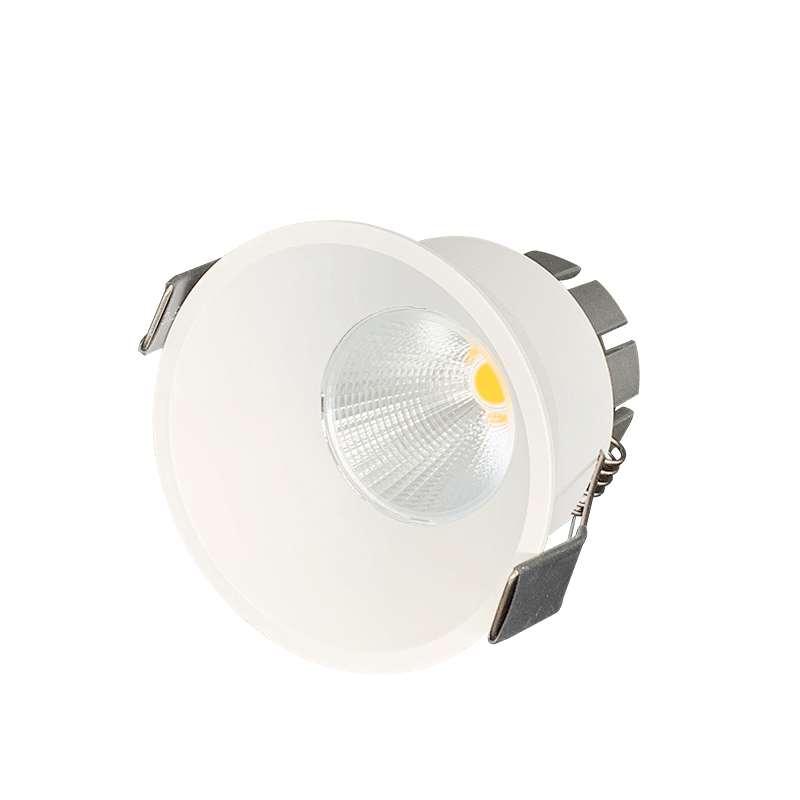News
The definition of color temperature, light intensity, light illuminance, anti-glare, light flux
The definition of color temperature, light intensity, light illuminance, anti-glare, light flux, light color rendering and dim to warm
Dim to Warm Technology
The innovative Dim to Warm technology allows to manage the colour temperature of the fittings through the regulation of the luminous intensity, providing smooth variations of warm light tones (from 3000K
to 1800K). As the luminous intensity of the source goes down, light becomes warmer.
This technology can generate changing lighting atmospheres, replicating the natural warmth of a traditional incandescent lamp, although with the low consumptions and better performance in terms of maintenance, durability, constant luminous flux of LED.
The colour rendering remains constant, independently from the level of dimming.
Dim to Warm requires the use of 1-10V or DALI.
Dimming 100% - 3000K
Dimming 50% - 2200K
Dimming 10% - 1800K
Color temperature of LED
Expressed as absolute temperature K, which means heating a standard blackbody and increasing the temperature to a certain extent, the color starts to change from deep red to light red to orange yellow
-White blue, gradually changing, when the color of a light source is the same as that of a blackbody, we refer to the absolute temperature of the blackbody at that time as the color temperature of the light source.
Because the temperature of the relevant color is actually close to the light color of the light source with black-body radiation
The evaluation value of the light color performance of the light source is not an accurate one
Due to color contrast, two light sources with the same color temperature may still have slight differences in the appearance of light and color. Only Feng color temperature cannot understand the color rendering ability of a light source on an object, or how the color of an object is reproduced under that light source.
Luminous intensity (1, Intensity)
The unit is candela, namely cd. The unit of light source in a given direction
The luminous flux emitted in the solid angle is defined as the (emission) of the light source in that direction
Light intensity (degree) refers to situations where the luminous intensity is specific to a point light source, or where the size of the emitter is relatively small compared to the irradiation distance. This quantity indicates the convergence ability of the emitting body in space. It can be said that luminous intensity describes how "bright" a light source is, as it is a common description of light power and convergence ability. The higher the luminous intensity, the brighter the light source appears, and at the same time, under the same conditions
The object illuminated by the light source becomes brighter, therefore, earlier descriptions of flashlights used this parameter.
LED illumination (E, illuminance)
The unit is lux (formerly called 1x). Luminous flux of 1 lumen
The illumination generated by evenly distributed amounts on a surface of 1 square meter.
Glare
If there are objects with extremely high brightness or strong brightness contrast in the field of vision, it can cause visual discomfort called glare, which is an important factor affecting lighting quality.
LED luminous flux (F, Flux)
Unit lumen, i.e. Im. The amount of light emitted by a light source per unit time is called the luminous flux of the light source. Similarly, this quantity describes the total amount of light emitted by a light source and is equivalent to the power of the light. The greater the luminous flux of a light source, the more light it emits. For isotropic light (i.e., the light emitted by the light source emits at the same density in all directions), F=4r1.
That is to say, if the light source is! If it is 1cd, the total luminous flux is 41=12.561m. Compared to mechanical units, luminous flux is equivalent to hand pressure, and luminous intensity is equivalent to pressure transport. To make the illuminated point appear brighter, we not only need to increase the luminous flux, but also increase the means of convergence, which is actually reducing the area, in order to obtain greater intensity.
Color rendering
The degree to which the light source presents the color of the object itself is called color rendering, which is the degree to which the color is true; The color rendering of a light source is indicated by its color rendering index, which represents the deviation of the color of an object under light compared to the color of a base light (too much sunlight) illumination, and can comprehensively reflect the color characteristics of the light source. Light sources with high color rendering exhibit better color performance, and the colors we see are closer to natural colors. Light sources with low color rendering exhibit poorer color performance, and the color deviation we see is also significant. International Commission on Illumination CIE sets the color rendering index of the sun as
100, the color rendering index of various light sources varies, such as high-pressure sodium lamps
The color rendering index Ra=23, and the color rendering index Ra of fluorescent tubes is 60-90.








 English
English